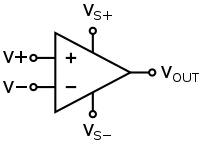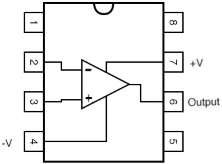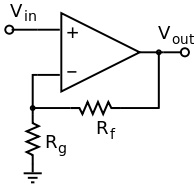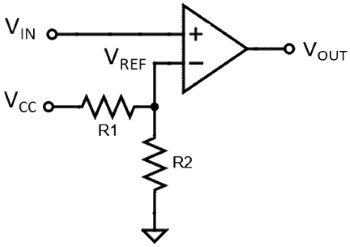Over 1 million movies and TV episodes
Learn more at amazon.com

op amp schemtaic sysmbol
An operational amplifier (more often referred to as an op amp) is an amplifier circuit with a differential input, in other words it amplifies the voltage difference between its two inputs. An op amp that has a very high gain, typically 100,000, but is usually configured for a lower gain.

op amp in 8-pin DIP package
Op amps come in several different packages, but the 8-pin DIP package is the most popular. The op amp requires a positive (V+) supply voltage and a negative (V? supply voltage). It has a non-inverting input (+), and an inverting input (?), and it amplifies the difference in voltage between the two, called the differential voltage.

op amp with negative feedback
The open-loop gain of an op amp (open-loop referring to operation without
an external feedback loop) is typically very large and so even a quite small
difference between the V+ and V? inputs drives the amplifier into saturation.
Normally an op amp would not be used open-loop. To reduce the gain, negative
feedback is used as shown above.
With negative feedback, the circuits voltage gain would be:
G = 1 + Rf/Rg

op amp configured as a comparator
An op amp might be used open-loop, or in a high-gain configuration when used as a comparator. As a comparator, the op amp compares the voltage level on one input with another voltage level set by the voltage divider circuit on the other input, as shown above. When the voltage on the input is below the voltage set by the divider, the op amp output stays at V-. When the voltage on the input raises above the voltage at the divider, the op amp output rapidly rises to V+.
More Science, Technology, Engineering, and Mathematics Information:
• Electronics Lab
• How to Calculate Impedance
• Projectile Motion
• Leonardo Da Vinci - Leonardo's Animals
• Types of Numbers
• Basic Laws and Analytical Methods for Circuit Analysis
• Inductive Reactance
• EMI, RFI, EMC, EMS, What's the Difference?
• Inductors in DC Circuits
• Zener Diode


